The pandemic has shifted the way we think about work. Nowhere is this clearer than with the so-called Great Resignation. More and more employees are leaving their jobs to put their mental health first or to pursue careers more aligned with their values. Although we’re seeing this trend in Canada, Statistics Canada reports that job vacancy rates increased in 2021 compared to previous years.
Employees’ desire to do meaningful work isn’t the only trend that will shape the job market in 2022. The labour shortage and the digital shift are driving organizations to innovate so they attract and retain talent in a fiercely competitive market. To survive and thrive in 2022 (and beyond), organizations must continue to innovate and adapt. Organizational development helps leaders navigate their organizations through change in a more people-focused way so they can hold on to top talent.
What is organizational development?
Although there’s no single definition of organizational development (OD), you can think of it as a planned, systemic organization-wide endeavour. Guided by humanistic values and behavioural science, OD practitioners work with senior management to improve organizational effectiveness while promoting employee well-being. It operates on the rational, emotional and relational level.
Organizational development requires constantly keeping up to date on best practices to increase and sustain an organization’s ability to change. We’ve identified five OD trends to help organizations succeed.
1. Artificial intelligence and automation
Artificial intelligence (AI) is a set of theories and techniques that leverages complex machines and computer programs to mimic human intelligence and perform tasks that can improve with information gathered through iteration.
The World Economic Forum predicts that AI and automation will create 97 million jobs by 2025. The acceleration of digital transformation across multiple industries will create new business models and ways of working, while also changing many employees’ jobs.
How can OD help?
As the nature and structure of work change, it may no longer be useful to think about work in terms of jobs. Agile organizations are instead starting to think in terms of the skills needed to compete for market share.
On the one hand, OD can help organizations clarify the future roles and skills required to implement their strategy, and then find and develop those skills through reskilling, upskilling and hiring.
On the other hand, OD can use AI to improve an organization’s human resources (HR) processes by implementing an HRIS (Human Resources Information System). An HRIS is a software program that integrates many HR-related functions (e.g., dashboard, employee profiles, performance evaluation) for easy day-to-day management of administrative tasks. Some of these processes can also be automated to provide a clearer, more comprehensive picture of how healthy the organization is from an HR standpoint.
2. Hybrid work
Telework is here to stay: According to Statistics Canada, 80% of teleworkers indicated that, post-pandemic, they’d like to work from home at least half of the time. As a result, more and more organizations are turning to hybrid work models (i.e., a mix of remote and in-office work as needed).
While giving workers more flexibility can make them more productive, the culture, team dynamics and depth of coworker relationships may suffer as a result. To ensure hybrid work arrangements are viable, organizations need to start thinking about what roles and tasks can actually be done remotely, as well as what kind of people and skills are well suited to remote work.
OD experts can help organizations find new solutions to manage hybrid work arrangements using design thinking.
What is design thinking?
Design thinking is an iterative, collaborative approach that relies on collective intelligence for innovation. It’s a people-focused mixture of analytical and intuitive thinking that allows organizations to experiment, create models and prototypes, as well as gather feedback for redesign.
3. Teamwork
Work teams are the building blocks of organizational life. Today’s workforce is more collaborative than ever. Teams are also more and more diverse in terms of ethnicity, age, gender, education and work experience. That trend will only continue in the years ahead.
Given these new realities, organizations can no longer afford to be mere “groups of individuals”. They must learn to intentionally harness the combined intelligence of these diverse teams. Research also shows that diverse teams are more skilled at solving complex problems and make better decisions 87% of the time. Organizations would be wise to leverage the collaborative power of diverse teams during the pandemic, although it’s not always easy to do.
OD can help leaders overcome bias, end siloed work practices and build a culture of equity and inclusion. This involves a serious commitment to monitoring and reframing how opportunities and resources are distributed throughout the organization.
4. Employee engagement
With the labour shortage and The Great Resignation, organizations need to take a more innovative, people-focused approach to engage their employees and build and strength relationships with potential talent.
In terms of hiring, adopting inclusive practices allows organizations to tap into a broader talent pool. That means looking for candidates in non-traditional places or dropping traditional qualification requirements that may disproportionately exclude underrepresented individuals.
In terms of retaining employees, organizations will benefit overall from offering better benefits (e.g., on-site daycare, excellent insurance) and wellness programs. In fact, research shows that employees who use these benefits report higher levels of mental and physical health, which translates into better performance and higher retention. Organizations can also leverage internal employee mobility through coaching and development programs, e.g., to hold on to talented staff.
Leaders, with the help of OD experts, can develop tools to monitor employee engagement and well-being to better understand the employee experience and assess their needs.
5. Leadership
2022 will be a pivotal time for many leaders as their teams move out of pandemic survival mode. That said, there are other changes on the horizon, including a labour and materials shortage.
Leaders will need to focus on non-traditional skill sets to navigate an uncertain and stressful labour market. They’ll have to build trust and create a safe work environment to mitigate employee anxiety. To do this, leaders will need to be authentic and vulnerable, and encourage their employees to do the same. Leaders who bring out the best in their employees are those who can find the balance between holding employees accountable for their behaviour and giving them leeway to explore their interests and grow. They’ll also need to be inclusive and actively create a sense of belonging within their teams by working to build social connections.
Here, OD can help organizations build a leadership pipeline and strengthen leaders’ people skills.
The future will hold many challenges, including climate change, accelerating technological innovation and global shortages. To survive and thrive in the coming years, organizations will have to be resilient and adaptable. However, if 2020 and 2021 were years of forced and unplanned reinvention, we can make 2022 a year of intentional change. Organizational development can help organizations undertake these changes in an intentional way that puts people first.
Want to learn more about our change management and organizational development services?
Download our brochure.


